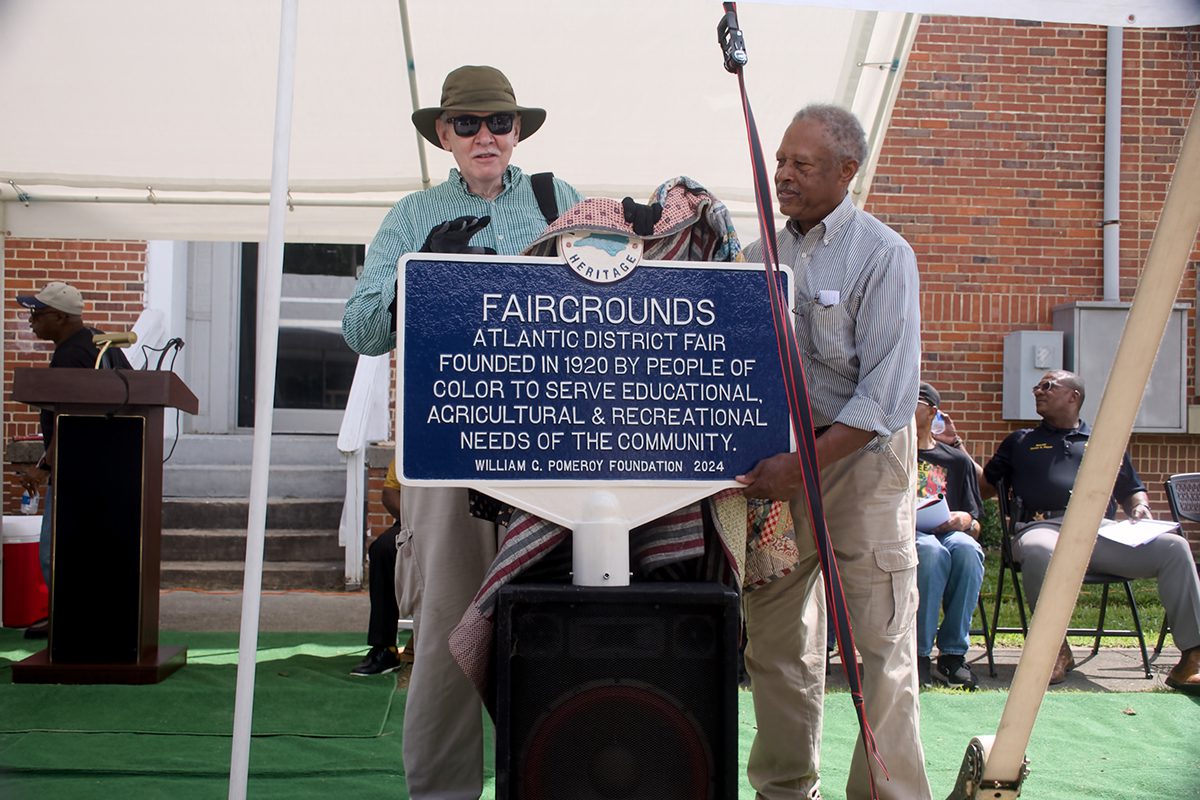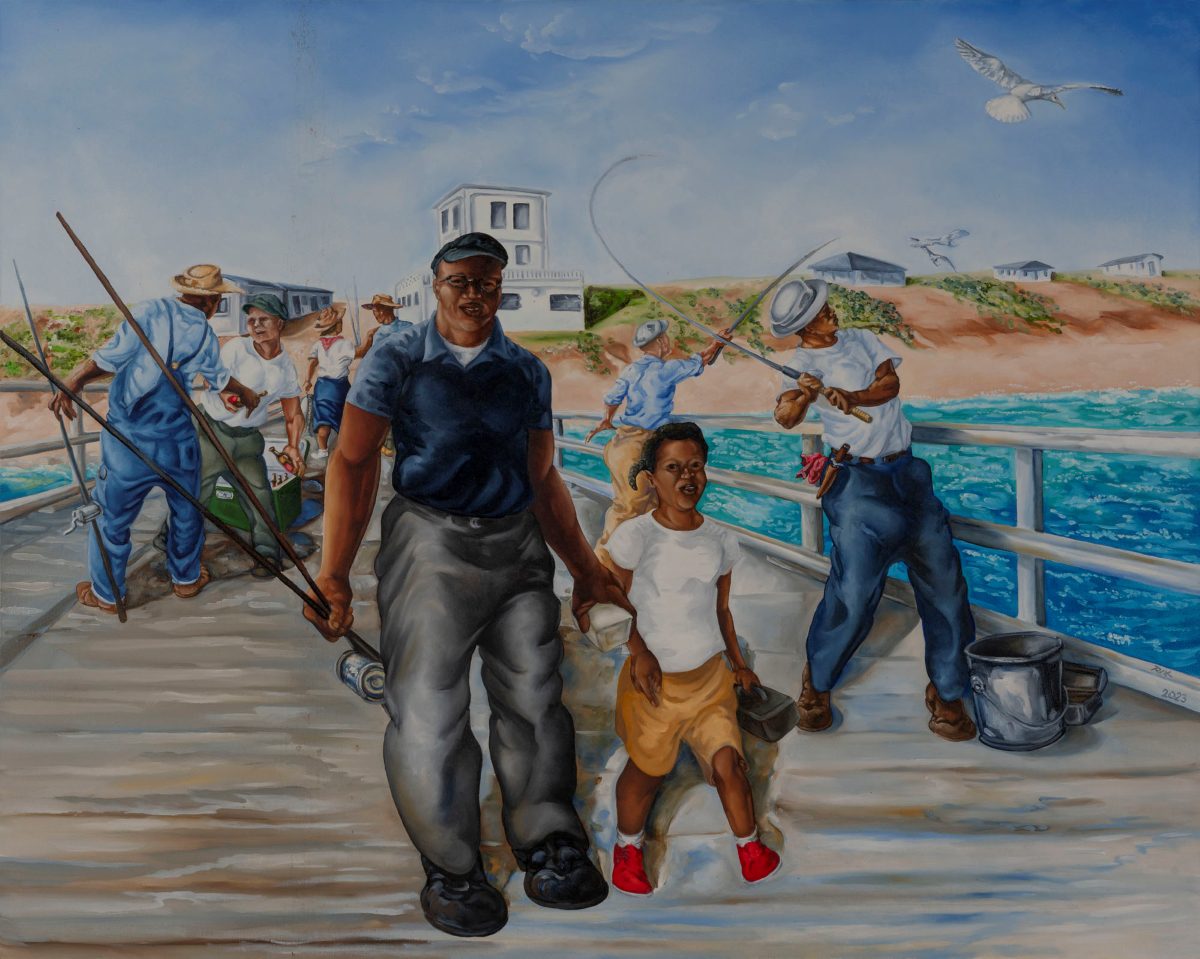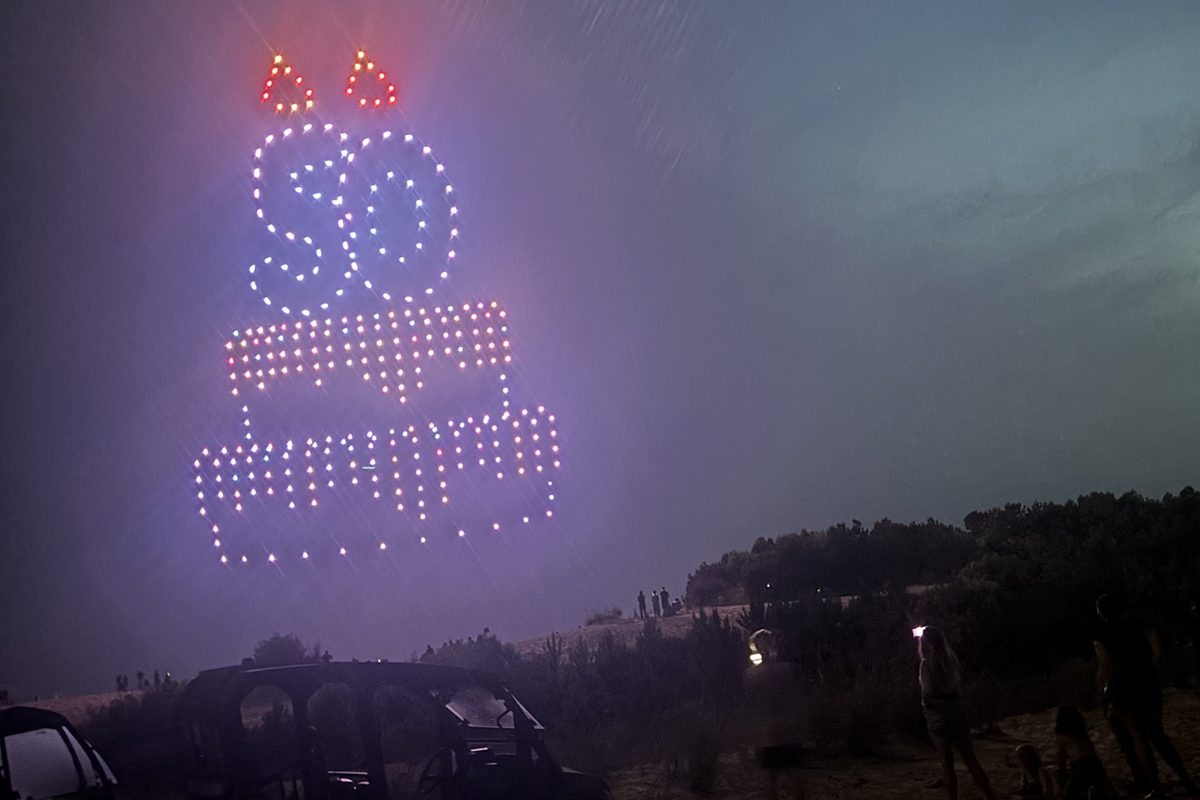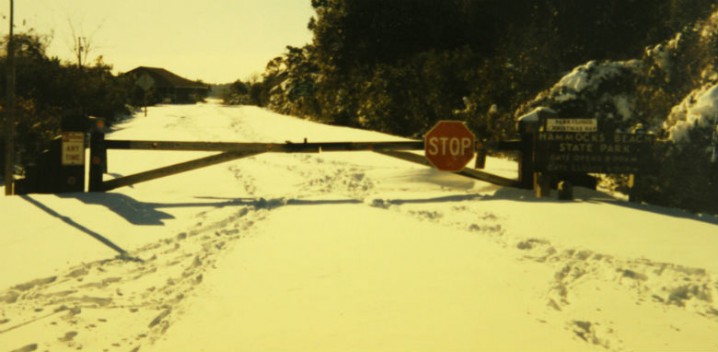
SWANSBORO – Stretched out in every direction was a blanket of snow — snow so deep that no one had seen anything like it. At least not here. Not on this day. Christmas Day on Bear Island at Hammocks Beach State Park.
Like a thief, the bitter cold had silently snuck into my thick gloves and robbed all the warmth out of my hands. My feet were numb and cumbersome as I awkwardly struggled through the knee high snow. Snow drifts would occasionally swallow me, much to the delight of my hiking companion, as I broke trail to the summit of our climb. Surrounding us was a landscape that was intimately familiar, yet on this day, it was pleasantly foreign. Reaching the pinnacle of our hike, we stood there in silence except for the whisper of a slight breeze.
Supporter Spotlight
On December 22, 1989, meteorological elements conspired to create the only coastal white Christmas on record for North Carolina. An epic snow storm known not only for its snow accumulation but also for its raging winds and resentful cold. When the storm developed, I was out of the state, hundreds of miles away as I enviously watched news reports about the potential for a mega storm.
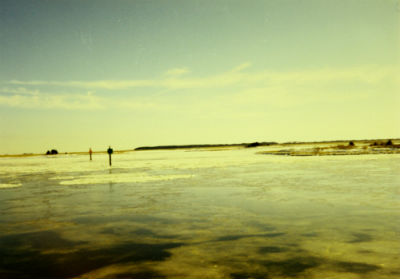
I headed off on dry roads out of Pennsylvania on Christmas Eve morning. I don’t remember exactly where I started seeing snow, but when I reached North Carolina I began to doubt my decision and wondered if I was going to spend my Christmas shivering in a frosty stranded car. The falling snow gradually tapered off, but the closer to the coast, the deeper the snow became. I crept along the snow covered roads as the sky pulled down its shade of darkness. The front wheel drive of my little car pulled me all the way to my house in Swansboro. A deep drift prohibited me from completely pulling into the driveway, thus I left the car partially in the road. It was unlikely that anyone else would be out for an evening drive. Exhausted, I went to bed.I love a good snow, I think in part, because snow on the N.C. coast is minor and quickly vanishes. I dismissed the forecast since predictions of snow on the barrier islands are often just a tease as the warm ocean waters usually reduce wintry precipitation to rain. However, by the evening of the twenty-third, the storm had intensified. With anticipation taunting me, I decided to head home. I was not going to miss this.
Christmas morning was clear and cold, cold, cold. The minus four degree temperature froze everything solid, including the water line to my house. Reluctantly, I stepped out into the glacial air to shovel out enough of the driveway to nudge my car off the road before a motor grader swept it into the ditch. As I finished my shoveling, I could hear off in the distance, a vehicle struggling to get traction on the snowy, ice-crusted road. The sound of a revving engine slowly became louder as a truck came into sight. As the truck passed by, the operator was wrestling the steering wheel like the reins on a wild stallion. A broad smiling face turned my way and I could hear the man holler a muffled “Merry Christmas” through the enclosed cab. Amazed, I yelled back “Merry Christmas” as the truck slipped and skidded down the slick road. I knew this man, he was my coworker at Hammocks Beach State Park, ranger Jesse Hines, and he was headed to work. I was not surprised. You could not ask for a more dedicated, even-keeled, good-natured and humorous soul to work with than ranger Hines.
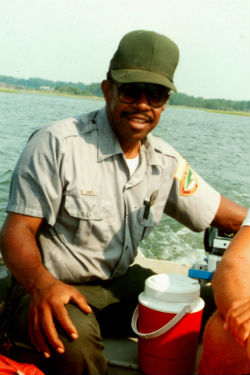
North Carolina State Parks had a long standing tradition of being open every day of the year, including Christmas Day. In the 1980s, it was decided that the parks would be closed Christmas Day to allow the staff to celebrate with their families. However, the closure required that one of the rangers be on duty at the park in case of an emergency. This year it was ranger Hines’ turn for this duty. Even though nature also decided to close the park and no one would expect him to be on duty due to the storm, ranger Hines was headed to the park mainland office.
About an hour later, back inside the house, the phone rang. It was ranger Hines. He had made it to the park. “Let’s go to Bear Island,” Hines said.
Supporter Spotlight
I put on as many layers as possible that still allowed a reasonable amount of mobility and hiked a few miles to the office. When I reached the park, I made my way over to the shoreline of the estuary waters that surround the park. Looking out over the sound, I couldn’t believe what I was seeing: The sound had frozen over and resembled an ice skating rink.
After three days of below freezing temperatures and overnight lows near zero, the saltwater was rendered Siberian. As I approached the office, Jesse bounded out of the nearby maintenance shop with two large grain shovels. He nodded towards the boat ramp which was covered by a three foot drift of snow. Without a word, we began shoveling. Each heaping shovelful landed with a dull plopping sound as we tossed it aside.
I finished up the last few feet as Jesse pulled the truck, trailer and boat over to the ramp. As the trailer tires rolled onto the ice, the weight of the boat cracked the ice into a thousand pieces, and the boat floated in a small pond surrounded by ice. Undaunted by the cold, the outboard motor fired to life. Our boat was a battered-up surplus vessel with a noticeable crack running down the bow. To make sure the ice didn’t open the crack below the water line, I keeled on the bow with a four-foot long, four-inch by four-inch piece of lumber breaking the ice ahead of the boat.
After about a hundred yards of ice breaking with the post, we had made it to the Intracoastal Waterway and open water. Jesse pushed the throttle down and the bow of the boat lifted up then leveled off as the boat raced down the waterway. The increased speed in the cold air caused our eyes to water and salty tears to stream across our faces. We turned into Cow Channel, which was free of ice due to the strong tidal flow from the nearby Bogue Inlet, and straight ahead was Bear Island. From a distance, the tall snow covered dunes looked like a floating iceberg.
Once on the island, we trekked to the garage and hopped into a four-wheel drive truck to ride down the four-mile-long beach. Drifting snow covered the open beach and stretched out towards the ocean. A distinct line indicated the reach of the last high tide and allowed enough room for us to drive onto the packed sand. As we made our way down the beach, we began to notice a few, then many, sea stars and crabs on the beach. A couple of days earlier during the height of the storm, gusty winds churned up the sea and most likely washed the crabs and sea stars into shallow water. Once in the shallower and much colder water, with their mobility impaired, the currents and waves deposited them on shore.
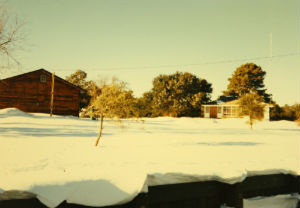
We got out of the truck for a closer look and discovered that most of the creatures were alive. The tube feet of the sea stars were slightly moving and once in the warmth of the cab of the truck, a stone crab defiantly lifted its claw. We picked up every sea star and crab that we found. The sea stars represented four different species including Forbes, beaded, gray and banded, while the crabs included stone, lady, purse and spider. We released the echinoderms and crustaceans in the calmer and deeper waters of the Bear Inlet channel. Whether they survived, I don’t know, but at least they were provided a better opportunity than freezing on the beach.
After riding the beach, we parked the truck and decided to hike through the dunes and over to the maritime forest. This proved to be a tiresome task, trudging through the deep, fluffy, powdered sugar snow and up and down the slippery dunes. At the south edge of the forest was a large mobile dune that sloped into the forest, engulfing the trees. From there, we entered the forest through a deer trail opening in the shrubs that we called the rabbit hole. Once you enter the rabbit hole it is a steep slope down the side of the dune before reaching the flat forest floor. I half slid, rolled and tumbled down into the forest with Jesse following right behind me.
Under the thick canopy of the forest, the snow wasn’t nearly as deep, allowing us to easily walk through. Spanish moss, draping down from the live oak trees, collected enough snow to look like white scarfs dangling from the branches. Any animal that passed through was easy to track as the imprint of their feet revealed their identity. We followed the track of a raccoon to the base of an ancient decaying oak tree. Peering inside, the animal snuggled down deeper, annoyed with our presence. Fox and deer tracks weaved a pattern on the forest bottom as they desperately searched for enough food to sustain them through the brutality of this unusual cold.
We made our way to the fringe of the marsh on the north side of the island. The cord grass and needle rush stood stiff poking out of the snow. There was no gentle swaying in the breeze that day. Following the shrub line along the marsh we headed back towards the boat dock. The red yaupon berries were even more obvious within a wrap of snow hugging the shrub as yellow rump warblers fluttered about.
Then, on a whim, we cut back into the dunes and began plowing towards the highest dune on the island. It was only a little over 60-feet high, but on this day, in these conditions, it was our Mount Everest.
If not for Jesse’s sense of adventure, I would have never ventured to Bear Island and received the gift of sharing a remarkable day with this legendary ranger. Standing on top of the dune, cold and delightfully weary, we inhaled the view into our memories knowing that we would probably never experience a Christmas like this again.



